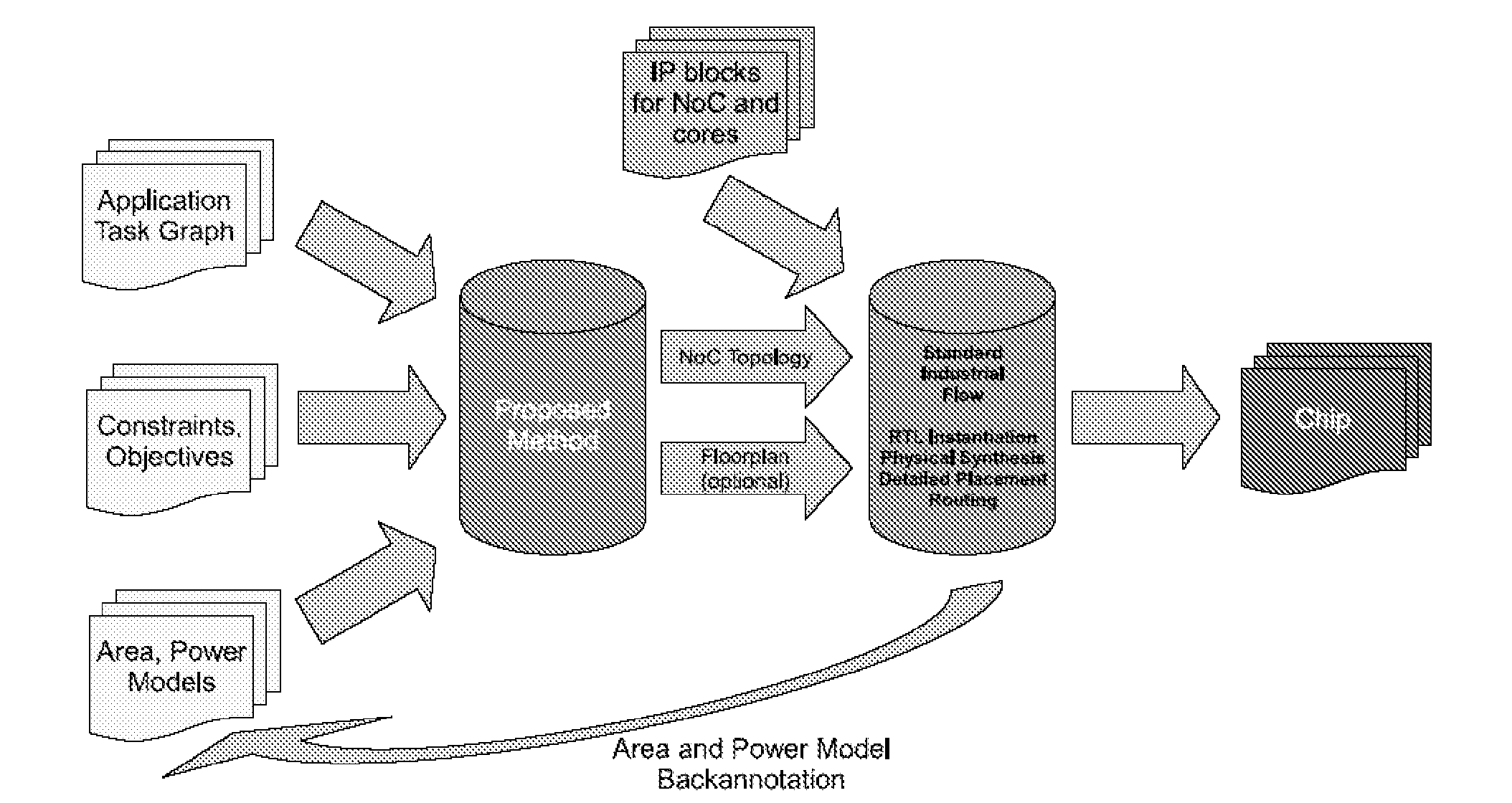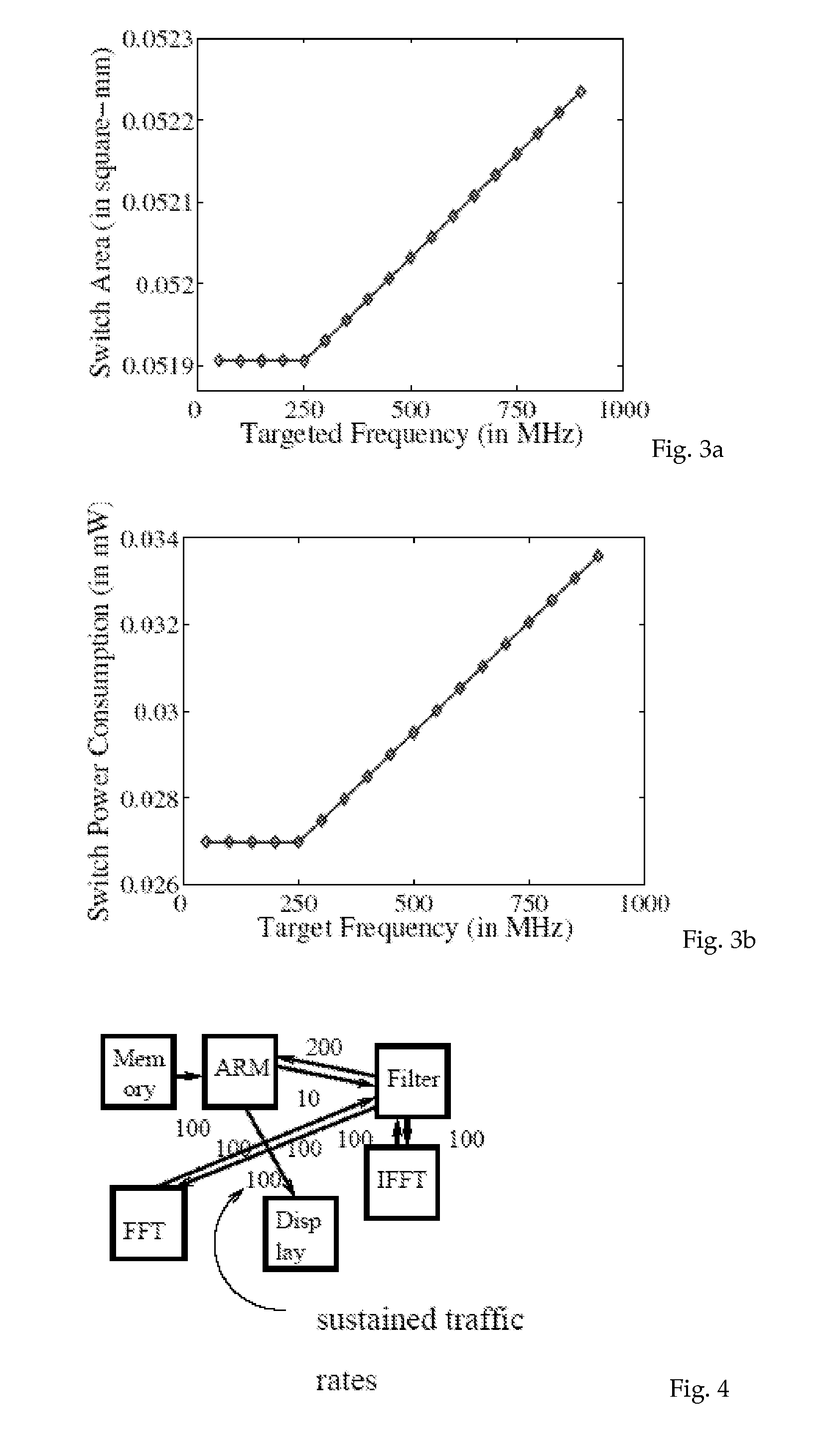Method to design network-on-chip (NOC) - based communication systems
a communication system and network-on-chip technology, applied in the field of network-on-chip (noc)based communication systems, can solve the problems of high design complexity of mcss, increased computation and communication complexity of design, and complex process for designing an efficient noc architecture while satisfying application performance constraints
- Summary
- Abstract
- Description
- Claims
- Application Information
AI Technical Summary
Benefits of technology
Problems solved by technology
Method used
Image
Examples
example 1
[0054]The min-cut partitions of the core graph of the filter example (from FIG. 4) for 3 partitions is shown in FIG. 6(a). The SCG for the 3 partitions is shown in FIG. 6(b). After applying the turn prohibition algorithm, the set of prohibited turns is identified. In FIG. 6(b), the prohibited turns are indicated by circular arcs in the SCG. For this example, both the turns around the vertex P3 are prohibited to break cycles. So no path that uses the switch P3 as an intermediate hop can be used for routing packets.
[0055]The actual physical connections between the switches are established in step 8 of Algorithm 2 using the PATH_COMPUTE procedure. The objective of the procedure is to establish physical links between the switches and to find paths for the traffic flows across the switches. Here, we only present the procedure where the user's design objective is to minimize power consumption. The procedures for the other two cases (with hop count as the objective and with linear combinat...
example 2
[0059]Let us consider the example from FIG. 6(a). The input core graph has been partitioned into 4 partitions. We assume 2 different message types: request and response for the various traffic flows. Each partition pi corresponds to the cores attached to the same switch. Let us consider routing the flow with a bandwidth value of 100 MB / s between the vertices v1 and v2, across the partitions p1 and p2. The traffic flow is of the message type request. Initially no physical paths have been established across any of the switches. If we have to route the flow across a link between any two switches, we have to first establish the link. The cost of routing the flow across any pair of switches is obtained. We annotate the edges between the switches by the cost (marginal increase in power consumption) of sending the traffic flow through the switches (FIG. 6(c)). The costs on the edges from p2 are different from the others due to the difference in initial traffic rates within p2 when compared...
PUM
 Login to View More
Login to View More Abstract
Description
Claims
Application Information
 Login to View More
Login to View More - R&D
- Intellectual Property
- Life Sciences
- Materials
- Tech Scout
- Unparalleled Data Quality
- Higher Quality Content
- 60% Fewer Hallucinations
Browse by: Latest US Patents, China's latest patents, Technical Efficacy Thesaurus, Application Domain, Technology Topic, Popular Technical Reports.
© 2025 PatSnap. All rights reserved.Legal|Privacy policy|Modern Slavery Act Transparency Statement|Sitemap|About US| Contact US: help@patsnap.com



